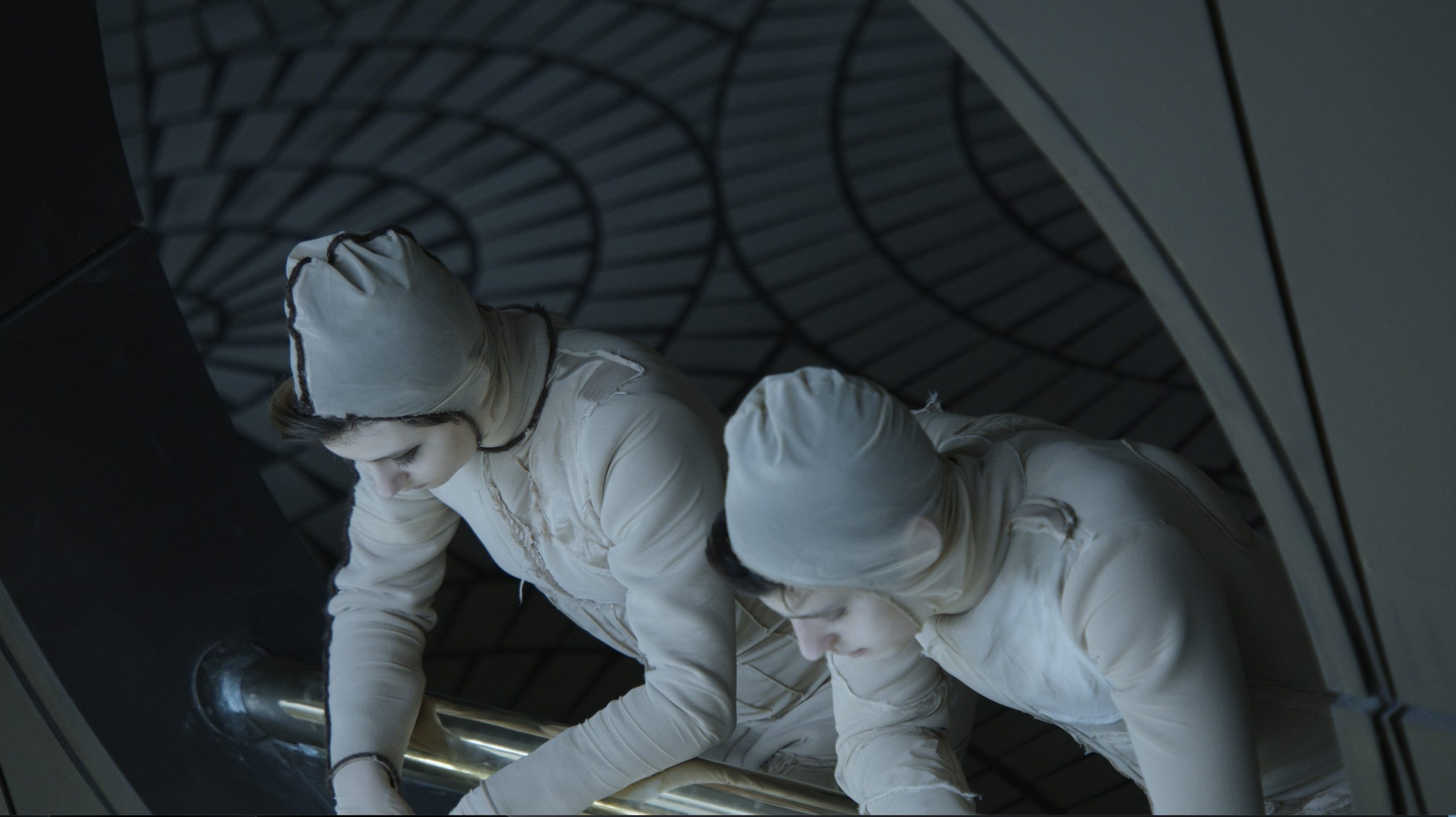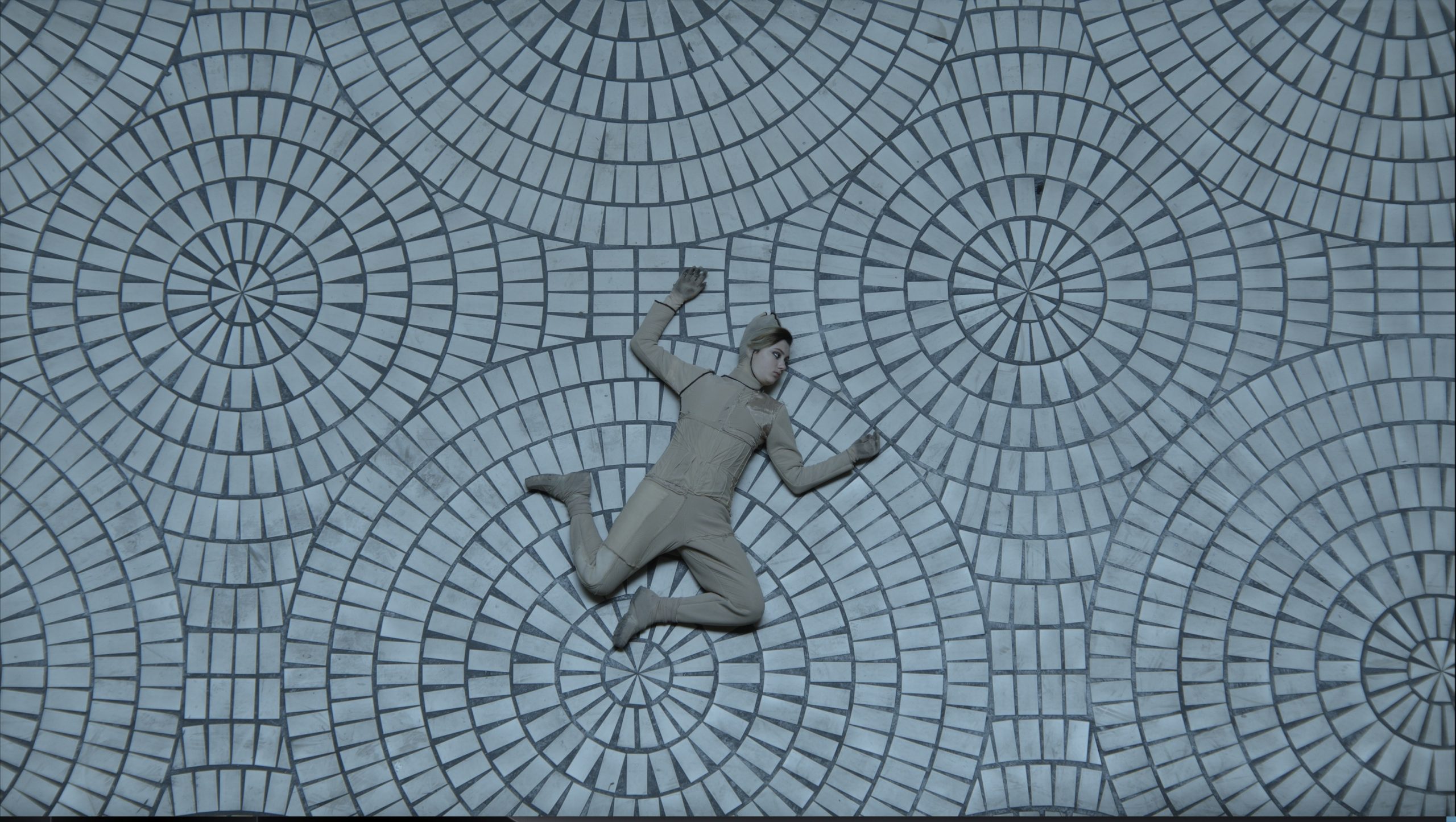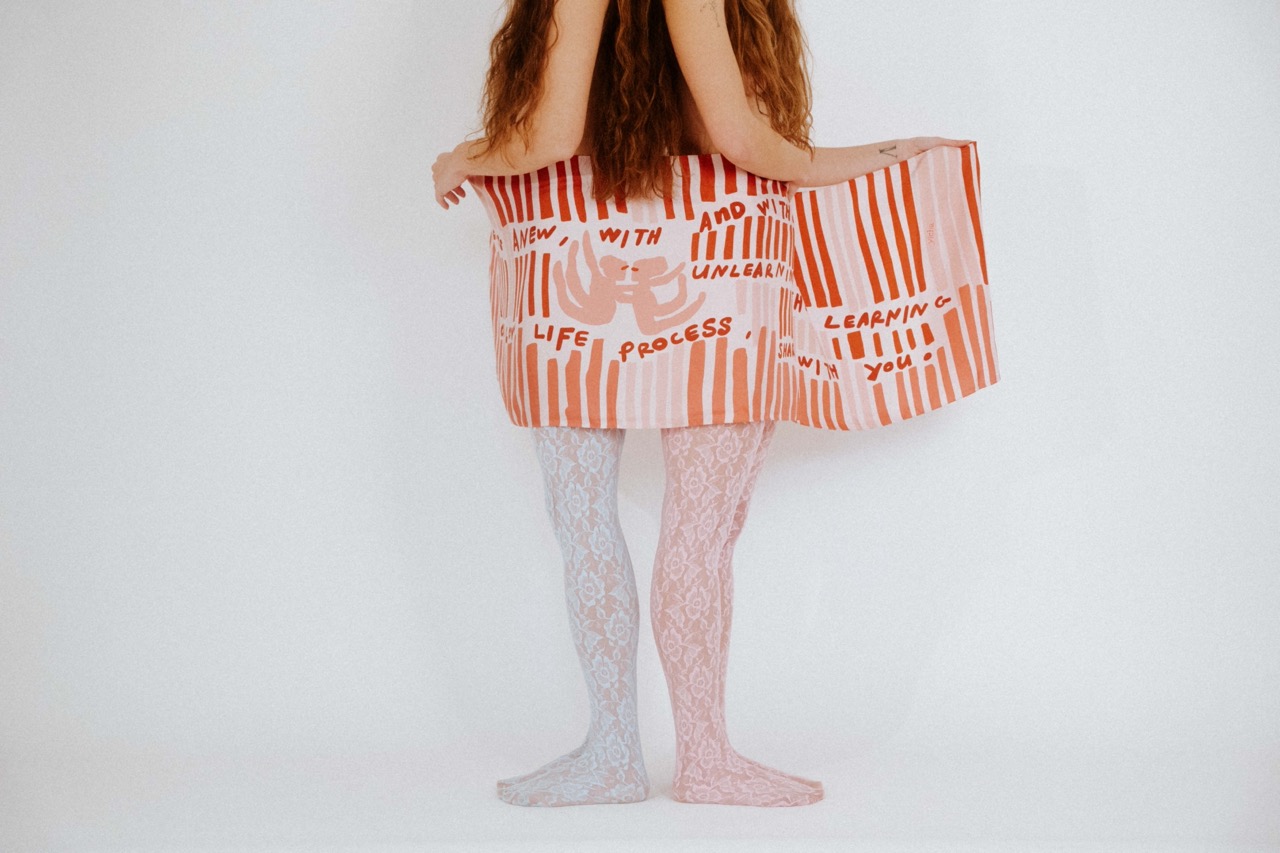Kaizo. George Drivas

A discussion about the costumes of a never ending story
Sent: Thursday, August 01, 2024 at 9:31 PM
From: “george drivas”
To: “efigousi”, “lazarus tzovaras”
Subject: text for the kaizo costumes
Hi guys, I hope all is well!
Following Kassiani’s proposal to showcase the Kaizo costumes I went through the process of recalling the whole thing in my mind, as it started and as it happened. I remember planning it while being in quarantine, when Athens was empty. I think I was influenced by this desolation of the city and one of the first things I remember is talking to Efi about the project and telling her that my main thoughts about the two heroes were that they were playing a game in a physical or virtual environment where there was no one else around them and that I wanted them to look like avatars. So, we started talking about their clothes. I remember that Lazarus was not yet on the team. I don’t think we knew, even then, that we would end up sewing rather than finding something ready-made. Efi?

Sent: Monday, August 05, 2024 at 4:42 PM
From: “Efi Gousi”
To: “george drivas”
Cc: “lazarus tzovaras”
Subject: Re: text for the kaizo costumes
Indeed, George, I kept from our conversation the condition of the work, that these two “children” are alone in a timeless universe, we know nothing about their identity, and based on the idea of avatars as well, I went along an axis, to create two costumes-uniforms that could be made from pieces of materials that one would find in a place after a great disaster. These materials would all put together the image these children had of the human species and would essentially be an imitation of human skin.
Something like this, of course, could not be readily available on the market, but instead required research and execution by a creator, so in the process I suggested that Lazarus would join in.
Efi, xx

From: george drivas
Sent: Thursday, August 08, 2024 at 12:15 PM
To: Efi Gousi
Cc: lazarus tzovaras
Subject: Re: text for the kaizo costumes
Yeah, your idea of making the costumes with a patina, I think was instrumental in giving them a (pre)story and so Kaizo becomes a continuation of something we haven’t seen. We find -in a way- the two guys in the middle of their action, having, we as viewers, “missed” the beginning, not knowing when and how it all started. Lazarus took this idea and began to “set up”, basically creating the clothes. The main memory I have, is being in the workspace where he was working and trying out different sewing ideas, etc., on a garment base in front of us. Lazarus I think it’s your turn to help us remember! 🙂

Sent: Friday, August 09, 2024 at 12:45 PM
From: “Lazarus Tzovaras”
To: “george drivas”, “Efi Gousi”
Subject: Re: text for the kaizo costumes
The biggest attraction was precisely this undefined nature of the characters; their human and non-human characteristics. The garment became the shell, the shell became the body, the second body, the body became the machine, or the body again. What does a human skeleton look like, if you remove from it everything that keeps it physically alive? Timeless placement requires materials that have surely always existed on earth: small leather skins, threads and braids of animal wool, washed cotton gauze dyed with fresh tea, organza made of silk that hardened when struck with stone and dirt. The structure of the clothes resembles that of a human being: soil, water, skin. It either overtly identifies the nature of the characters, or it carefully camouflages their non-terrestrial nature.
There is something magical about working with your hands. Two spread out bases and on them we try all the pieces in different compositions. What can protect a spine, or what a knee? What can outline the front, or what can give a three-dimensional feel? The composition of the uniforms felt like anatomy -like studying, on a structural level, a living organism · Like creating a new human being. What makes a man, a human being?
Many thanks to Mrs. Sophia for the construction of the costumes and Theodora Christopoulou for her valuable advice.
❤️

Sent: Sunday, August 11, 2024 at 6:13 PM
From: “george drivas”
To: “Lazarus Tzovaras”
Cc: “Efi Gousi”
Subject: Re: Απ: text for the kaizo costumes
I think Lazarus put it excellently. In an almost exact dialogue with what he says, I am currently exhibiting a photograph of Kaizo, which has been “left” on the ground and partially covered by it, as part of a group exhibition of visual artists (“Forest bathing”, curated by Kika Kyriakakou) in Diomedes Park, Athens. In a way it encounters a lost organicity. The Kaizo, its images and costumes are a story on the borders of the human. Where man ends and (perhaps) begins again. His own heroes move on these boundaries. They are and are not human. The final video of the piece has been divided into pieces -chapters and I have asked an AI program to put them together as it sees fit and thus create different narrative versions of (my) story. My final project is the work of an intelligent program or vice versa. With the modern “onslaught” of AI increasingly characterizing many aspects of the artistic -and not only- process – I think Lazarus’ last sentence would nicely conclude our conversation “What makes a man, a man?” Let’s close with the suspension of this phrase. Guys thanks a lot for this nice conversation-memory.
Ιt was a pleasure!
Note: The aforementioned exhibition at the Diomedes Botanical Garden, curated by Kika Kyriakakou and produced by Polygreen Culture & Art Initiative , in which a photograph from the Kaizo project is exhibited, will be open until 29 September 2024.
Μore information: https://www.pcai.gr/shinrin-yoku-forest-bathing

Project Photos> copyright George Drivas
Exhibition photographs> Maria Tultsa, George Drivas
about the work
Kaizo unfolds the story of two children as they wander through an empty town, in a bizarre game of exploration. They venture forth in an attempt to discover something, seeking to understand what exactly happened, or perhaps just to escape from it all. Kaizo is an endless tale of love in a desolate world, a narrative game with no true conclusion, and a journey through an ageless era. It resembles a video game or a post-apocalyptic tale, which unfolds in variations, chapters, or levels. It commences and concludes endlessly. The beginning is the end, and each ending marks a new beginning.
“Kaizo” (2022-23), single-channel video and series of digital photographs
Screenplay-Direction > George Drivas
Art Direction > George Drivas, Efi Gousi
Costume Design > Lazarus Tzovaras
Performance> Angeliki Beveratou, Nikos Vlachogiannis
Photography > Claudio Bolivar G.S.C.
Make up > Eleni Savvidou
Editing > Christos Gakis
Sound > George Ramantanis
George Drivas was born in Athens. He represented Greece at the Venice Biennale in 2017. George Drivas’s work has been featured as a solo show at AnnexM/Megaron, The Athens Concert Hall (2020), the National Museum of Contemporary Art, Athens (2018 and 2009), and La Galleria Nazionale, Rome, Italy, (2017), and in over 150 group exhibitions or festivals such as: “New Cinema and Contemporary Art”, Haus der Kulturen der Welt, Berlin; “Rencontres Internationales,” Louvre Museum, Paris; “back forward rewind”, Media Art Lab, Moscow; “Imagined Communities”, 21st Biennial of Contemporary Art_Videobrasil, São Paulo; and “Antidoron – The EMST Collection,” documenta 14, Kassel. George Drivas’s work is part of the National Museum of Contemporary Art (EMST) collection in Athens.
Filmography: 2006 Beta Test, 2009 Empirical Data, 2011 Sequence Error, 2014 Kepler, 2019 Empirical Data 2_0, 2023 Kaizo




